As one of the tourist destinations that experienced one of the most brutal wars in Vietnam, Quang Tri is still famous for being the place that retains the most traces of history.
These vestiges still exist in physical and spiritual form through several historical relics such as the Quang Tri ancient citadel and the Hien Luong bridge. If tourists are familiar with these two locations, today IZITour would like to introduce to you the next famous historical relic of Quang Tri - Vinh Moc Tunnels.
An Introduction To Vinh Moc Tunnels
For first-time visitors to Quang Tri, few people know that right below their feet is a system of tunnels, an underground "world" of the army and people of Vinh Linh during the years of resistance from 1965 to 1972.

To provide advantages in warfare by providing cover and secrecy, the army and people of Vinh Linh have quietly transferred their lives from the ground to the underground by digging one of 114 tunnels throughout Vinh Linh district. These 114 tunnels have a total length of nearly 42km.
The Structure of Vinh Moc Tunnels
The project began in early 1965 and was completed on February 18, 1966, located in the heart of a red basalt hill running close to the edge of the sea. The special thing is that the education of the project commander (engineer) was only at the elementary school level.
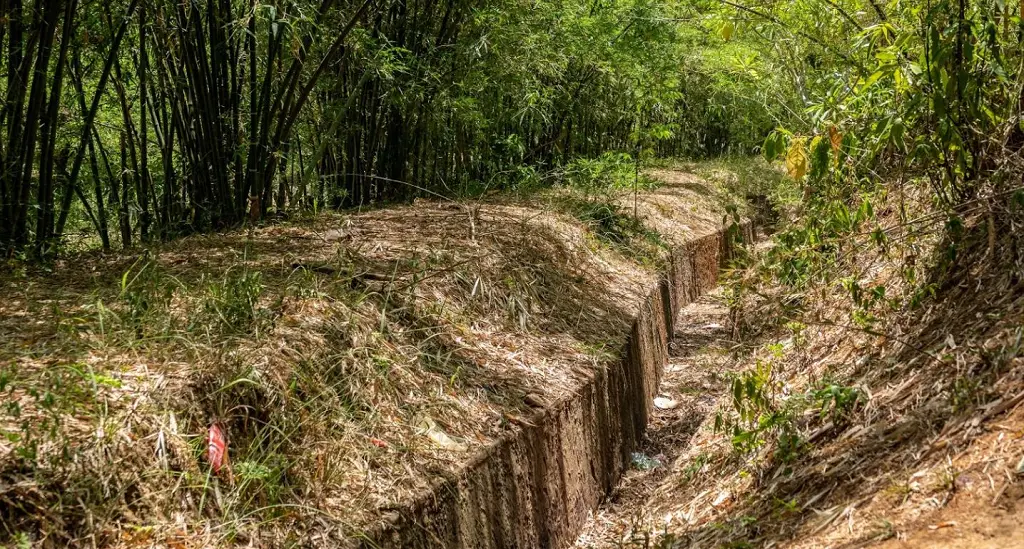
The entire dome-shaped tunnel system is 0.9m x 1.75m in size, 2.034m long, and includes many branches connected through the 870m long main axis. The tunnel has 13 entrances, including 6 doors leading to the hill, 7 doors leading to the sea, and 3 ventilation wells.
Furthermore, the tunnel doors have wooden pillars to prevent collapse and landslides, are discreetly camouflaged, and are angled in the direction of the wind, ensuring ventilation.
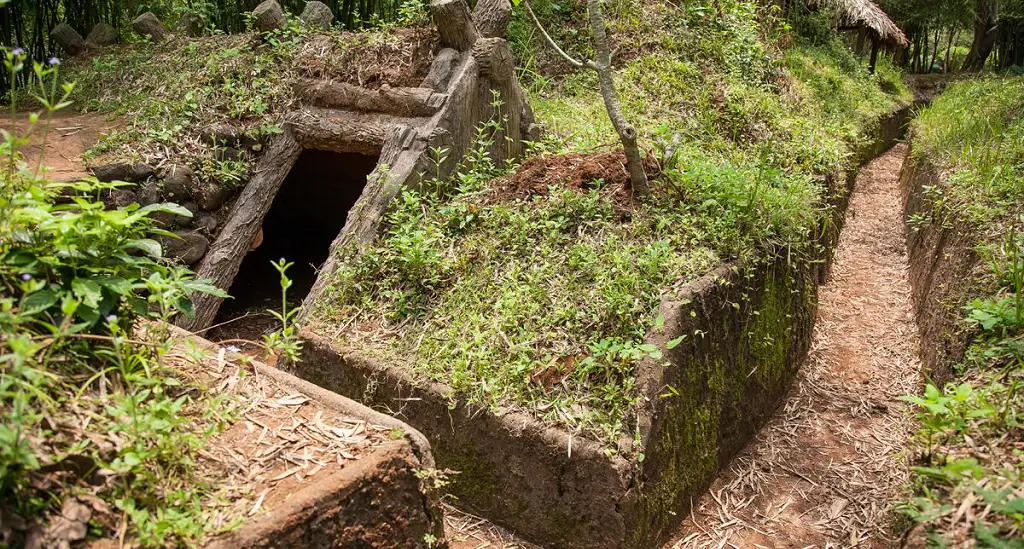
The ground of the Vinh Moc tunnel is dug 5m above sea level, tilted from 8 - 120 degrees from South to North and from West to East so that water can easily drain and not stagnate in the tunnel. Activities still take place normally even in the rainy season.
Thanks to that, the clay in the tunnel became harder over time, causing the Vinh Moc Tunnel structure to exist almost intact to this day. It is the factor of ensuring safe ventilation that allowed hundreds of people to live and fight in the tunnels for a very long time.
Deep inside the tunnels
Going deep into the Vinh Moc tunnels, visitors will admire the precise and scientific distribution of each location, residence, and activity in the tunnels.
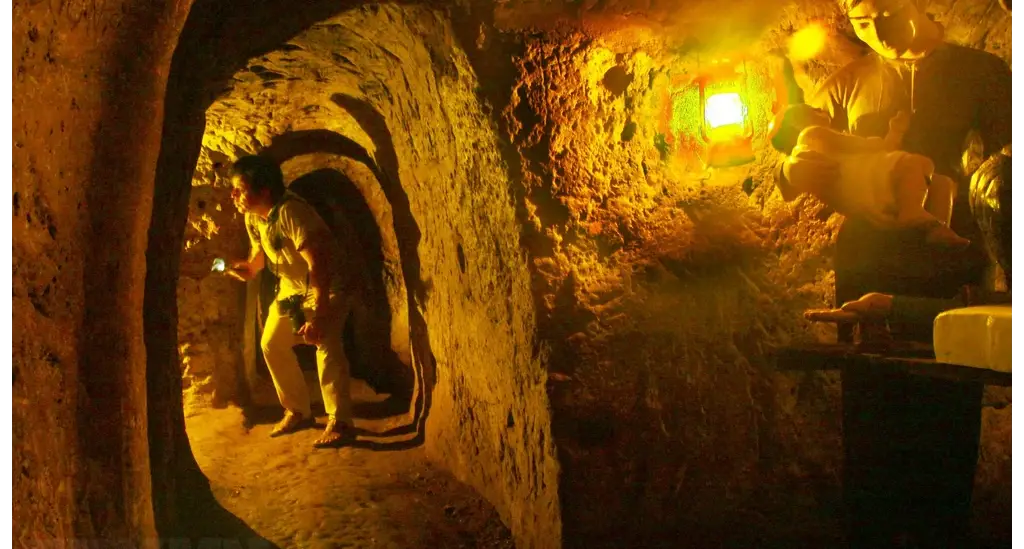
Specifically, they turned the underground into sturdy fortresses with 3 interconnected floors. The first floor is 8 - 10m deep and is used for combat maneuvers and shelter. The second floor, 12 to 15 meters above the ground, is where the villagers live. The third floor is more than 23m deep, used as a warehouse to store food and weapons for Con Co island as well as serve in combat for the troops and people of Vinh Moc Tunnels.
It can be said that Vinh Moc Tunnels is an underground village with full facilities such as domestic water wells, rice warehouses, Hoang Cam cooker, guard stations, telephone stations, infirmaries, operating rooms, maternity homes, bathrooms, etc.
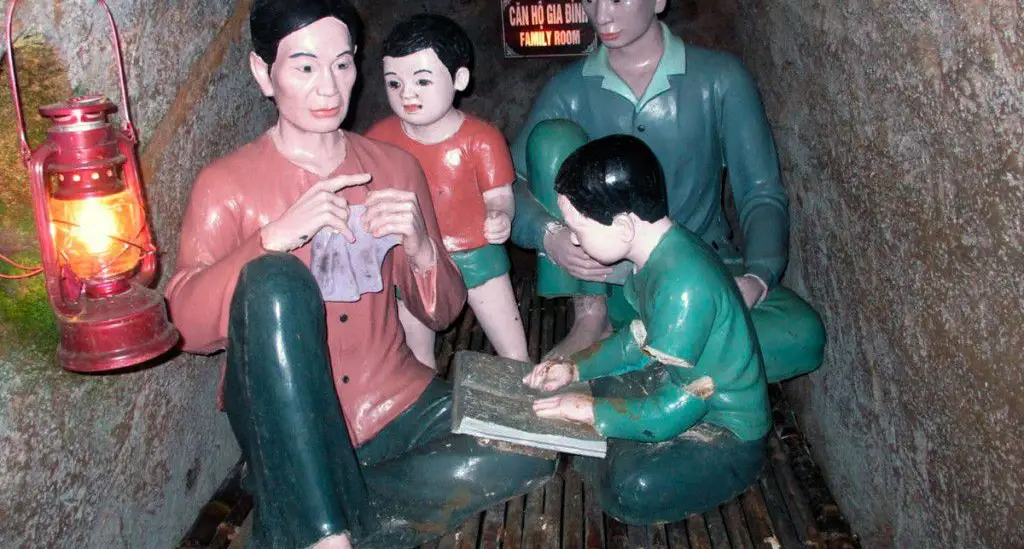
Along both sides of the tunnel there are small cells that are 1.8m deep and 0.8m wide and become rooms for households of 3 - 4 people to live in. Inside the tunnel, there is also a hall used as a meeting place, art performances, and movie screenings with a capacity of up to 50 people.
The tunnels start from wells and then radiate into tunnels. The tunnels often run zigzag, in a Z shape to create solid bends, using the ground walls themselves to block the paths of bombs and bullets if they hit them.
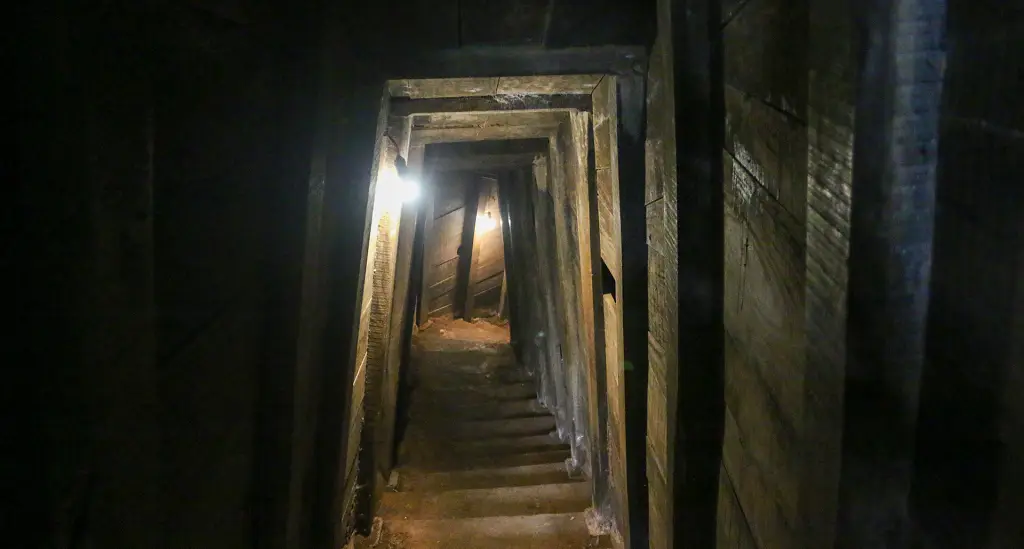
Fun fact: From 1965 to 1972, the land of less than 820 square kilometers of Vinh Linh was subjected to more than half a million tons of bombs and bullets, which means on average each person had to bear 7 tons of bombs. However, during nearly 2,000 days of existence of the Vinh Moc Tunnels, not a single person was injured in the tunnel and 17 babies were born.
The importance of Vinh Moc Tunnels in the modern era
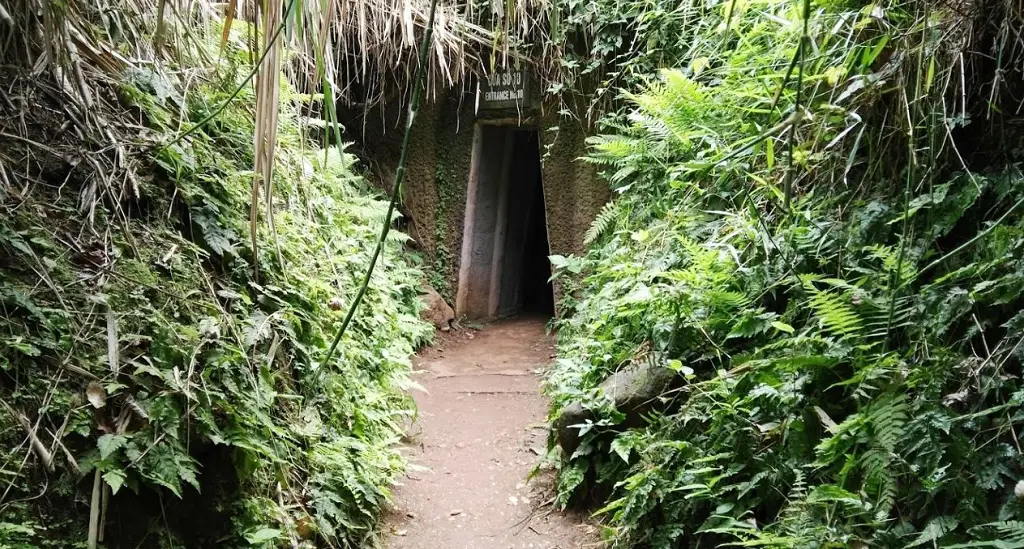
- In 1976, the Ministry of Culture and Information (now the Ministry of Culture, Sports and Tourism) specifically recognized the Vinh Moc Tunnels relic as a historical and cultural relic on a national level.
- In 2014, the Vinh Moc tunnel relic continued to be recognized as a special national monument.
Vinh Moc Tunnels Museum
Within the relic site, there is also the Vinh Moc Tunnels Museum, which displays war evidence, especially the famous painting “To Be Or Not To Be”.

There are also many tunnels in Vietnam, and Vinh Moc Tunnels is honored to be on par with famous names such as Cu Chi Tunnels (Cu Chi), and Khe Trai (Hue),... as these are the most majestic and important historical relics of Vietnamese culture. Therefore, when visiting Vinh Moc Tunnels, visitors can not only admire an underground architectural wonder but also learn about cultural history as well as the ingenuity and resilience of the Vietnamese people.
See our package tour to Quang Tri:
>> The Phong Nha cave and the famous 17th Parallel (Hue - Quang Binh) - 02 Days
>> Discover Phong Nha and the 17th Parallel (Hue - Quang Binh) - 03 Days
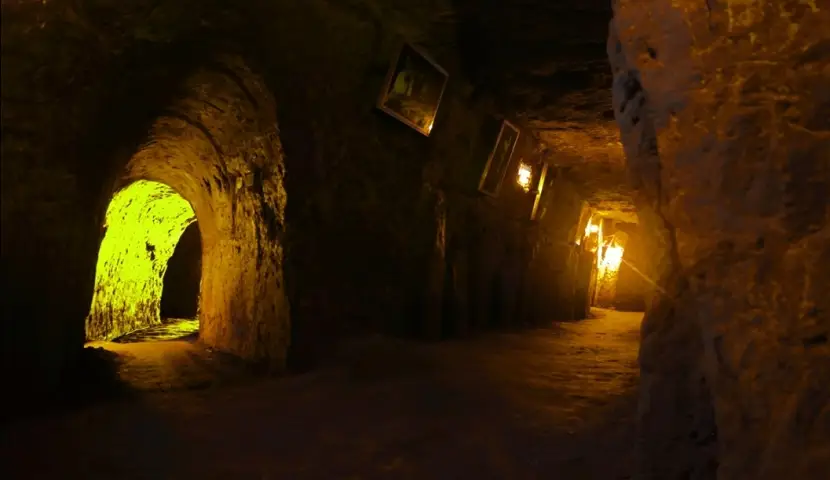







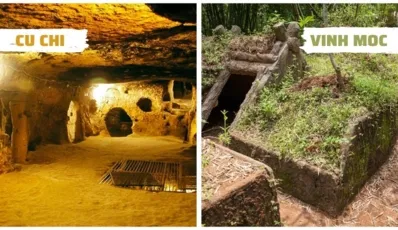
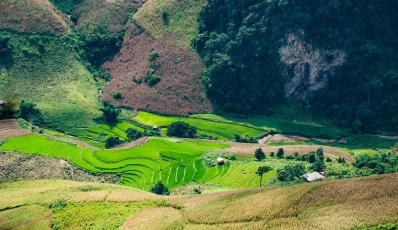
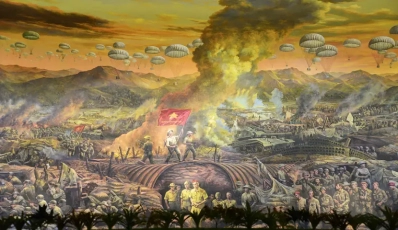


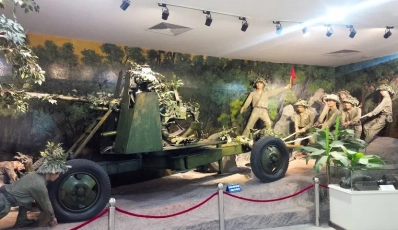
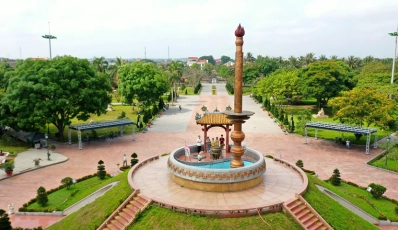
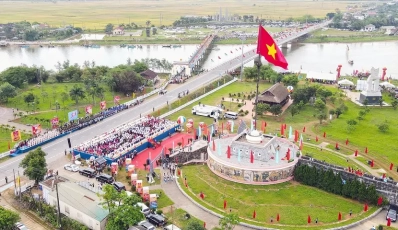
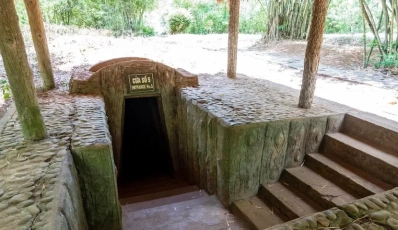




 TRAVELERS' CHOICE 2026
TRAVELERS' CHOICE 2026 


